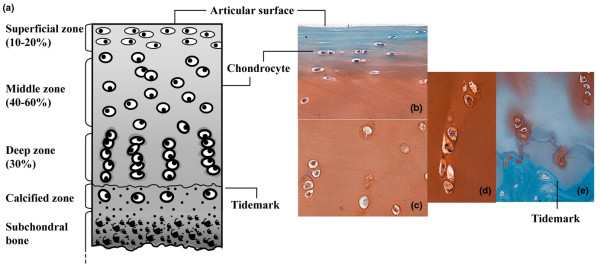Figure 1.
Overview of cartilage structure and zonal architecture and representative Safranin O micrographs of cells in each zone. (a) Adapted from Tyyni and Karlsson [65]. Identification of each zone was based on previously reported characteristics that comprise cell shape, morphology, orientation, and pericellular matrix (PM) deposition [47]. Superficial zone (SZ) cells are small, elongated in shape, parallel relative to the surface, and lack an extensive PM. These cells predominate the first 50 μm. The middle zone (MZ) is distinguishable by rounded cells that do not exhibit an organized orientation relative to the surface, are within ECM rich in proteoglycans and show presence of PM. Deep zone (DZ) cells were identified by an extensive PM deposition with chondrons in groups of three or more cells arranged in columns perpendicular to the surface. Safranin O staining of the (b) SZ and upper MZ, (c) MZ, (d) DZ chondrocytes and (e) DZ and calcified zone.

